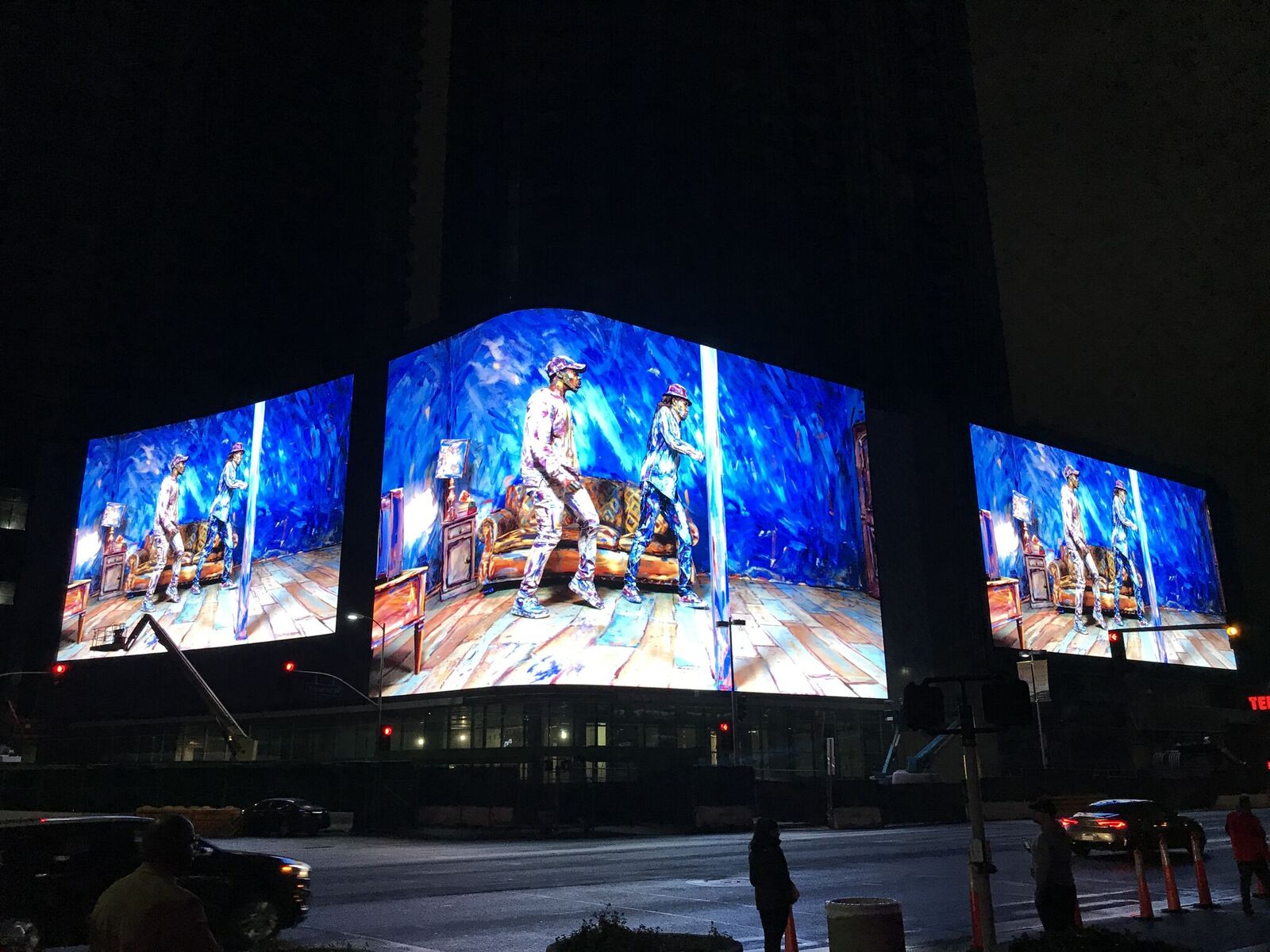The new Circa development in downtown Los Angeles is a traffic stopper. The twin 35-story luxury residential towers, on the corner of Figueroa and 12th Streets, are wrapped with three giant LED screens covering an eight-story parking structure used by patrons of the adjacent L.A. Live and STAPLES Center.
While LED screens of similar size have been seen in Times Square, the Circa screens mark the debut of the LED display “spectacular” market in L.A. Circa’s screens comprise more than 18,000 square feet of exterior LEDs from SNA Displays; the convex and concave design of the screens mirrors the unique curvature of Circa’s architecture. The displays feature a 10 mm pixel pitch and contains over 17 million pixels.
The massive LED screens went live with a dynamic NIKE commercial featuring tennis great Serena Williams. But they are intended to generate more than advertising revenue: The screens are designed to create visual excitement and energize downtown LA’s South Park District.
SNA Displays chose Christie Terra as the switching, scaling and signal extension solution for the LEDs’ 4K content. Terra consists of a lineup of transmitters, receivers and a controller, which represent an all-new AV solution for the transport, processing and control of audiovisual content, including 4K@60Hz video formats, over 10G Ethernet networks. Built on standardized SDVoE (Software Defined Video over Ethernet) technology, Christie Terra provides unprecedented performance capabilities including the delivery of zero-frame latency, artifact-free video over readily available and affordable 10G components.
“The Circa screens will display a diverse array of content 20 hours a day,” said Stewart Ives, Director of Systems at SNA Displays. “Located downtown across from the Staples Center, the screens are definitely high-profile. They just have to work, and Terra gives us the confidence that it will deliver screen content hour after hour on a daily basis.”
SNA Displays had been considering another solution to handle the screens’ three 4K feeds, but that other technology required the use of two duplex fiber cables per device, Ives recalled. “The Terra units only required one duplex fiber cable so we could use the second cable for a confidence feed to a rack in the field,” he explains.
“Terra also has virtually zero latency for video source transmission – a big differentiator in the marketplace,” said Ives. “That means we’re able to display content in real-time. StandardVision, LLC, which operates the display, can do a live shoot on the street and see it in real-time on the LED screens with no delay.”
“Terra gives a lot of flexibility to the ownership group for activation,” said Pat Green, Senior Director of Systems at SNA Displays.
The Circa screens use a Terra Transmitter and Terra Receiver for each of the three screens plus one Terra Controller for the system. The control room is located four floors up from the content distribution room on the lower level of the parking deck. Utility 1G network ports on the Terra receivers are also being used to supply local control connections. This avoids the need for another network cable to be run to each endpoint.
Terra also offers flexible control of the displays from other than the centralized location. “Using the Terra Controller, I can remote in and pass over the built-in content management system and take over the three screens,” noted Ives. “The screens can be remotely operated from the street or from any other network drop or location a Terra device is located.”
“What makes Terra special is the Controller and Terra Manager Control interface. It allows us to quickly and easily prepare customized system layouts that we can quickly recall, and we can also change what each device does on the fly,” said Green. “We can display one event and quickly switch to another event – it’s easy to do. The Terra Controller certainly stands out in this regard.”
Christie is a founding member of the SDVoE Alliance, a group of companies leading in the transition of the AV industry to IP-based solutions. The alliance brings companies together around a standardized hardware and software platform. SDVoE network architecture is based on off-the-shelf Ethernet switches, which offer cost savings and greater system flexibility and scalability compared to traditional approaches.
“SDVoE’s standardized infrastructure and 10G Ethernet is part of our road map,” said Green. “Although the Circa screens are displaying only 4K content now Terra will be accepting of other displays and networks natively as time goes by.”
The Circa development is symbolic of downtown L.A.’s resurgence. With concerts, conventions and other well-attended venues in the area, the neighborhood around the Circa property draws more than six million visitors annually.
